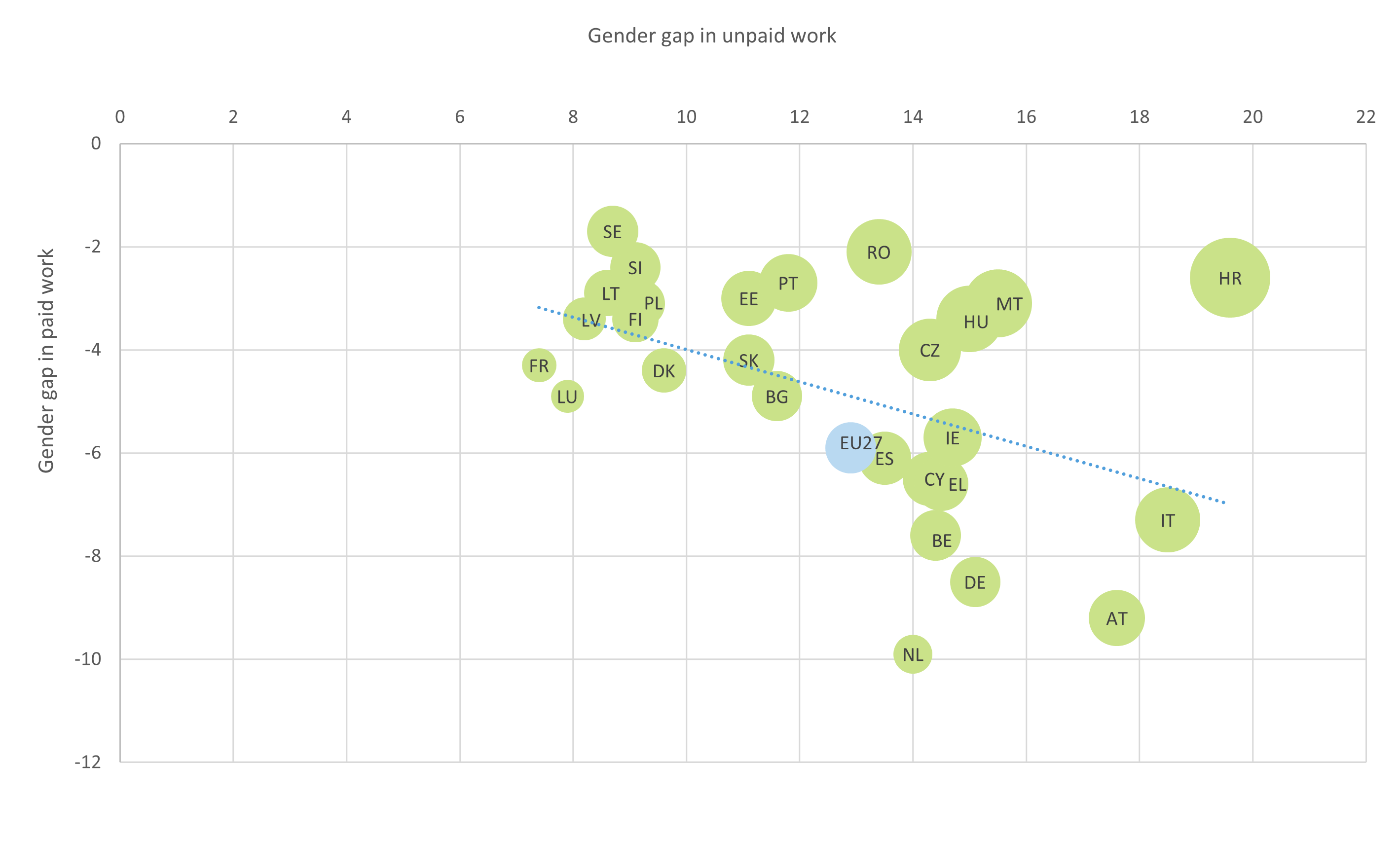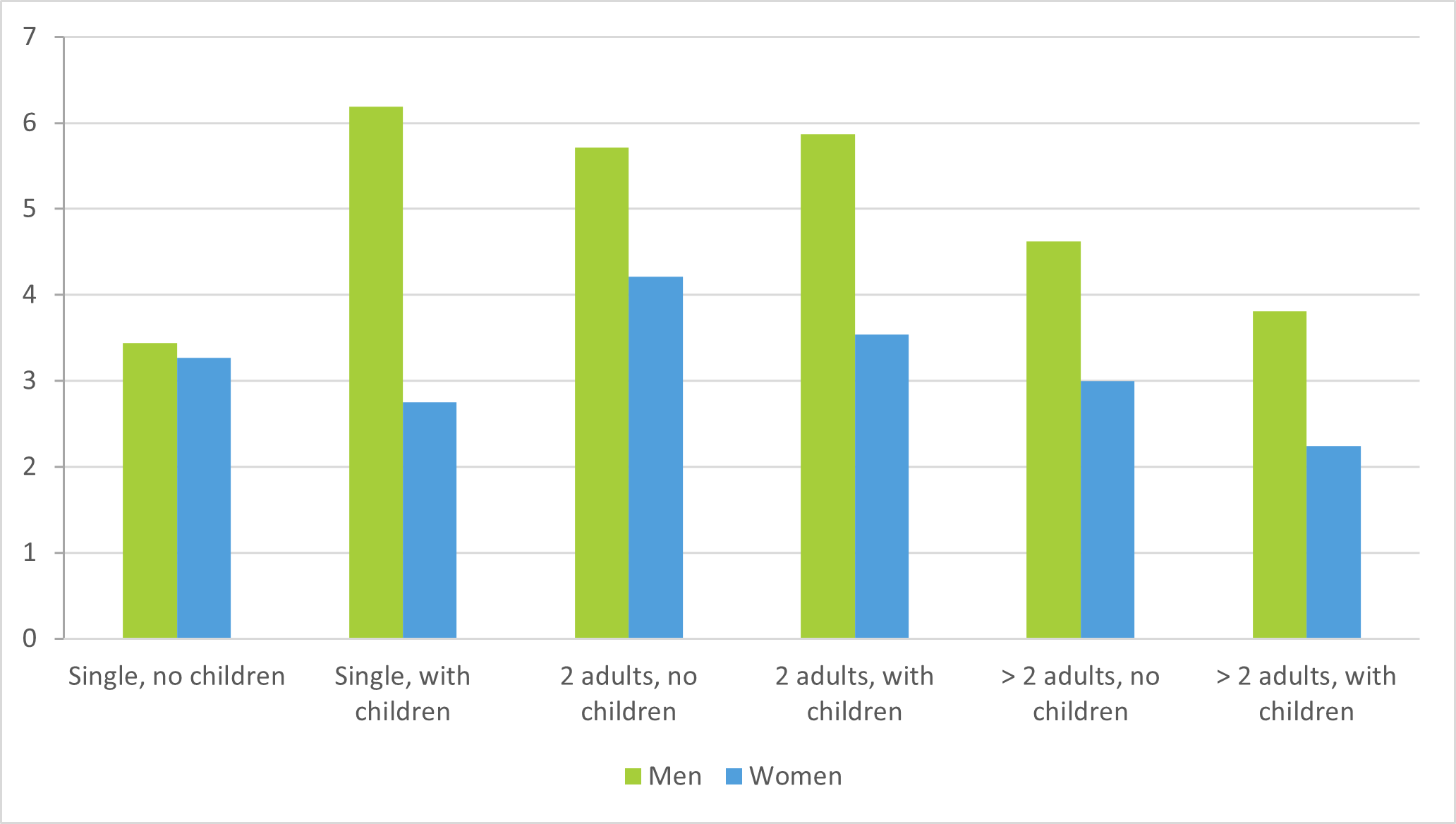Gender equality – What’s next? Let’s focus on the world of work
The jury is still out on the question whether men and women are from distinct planets. When it comes to the world of work, however, the evidence shows that they are worlds apart.
It starts with the fact that men and women do not work in the same sectors, the same occupations or the same workplaces. If you are at work now, look around. There is a good likelihood that – like 60% of workers in the EU – you are surrounded by more co-workers of your own gender than of the other gender. In 2021, only one-fifth of us worked in mixed-gender workplaces, where the shares of women and men are roughly equal. And, most of us (66%) had a male boss. If you are a woman, there was at least a 50/50 chance that your boss was female. Only 20% of male workers reported working for a female boss.
And the differences go well beyond the question of whom we are working for and with.
Working time is another big divider. On average, in the EU, men spent nearly six hours more per week than women on paid work: men reported working a little over 42 hours per week, while women worked close to 37 hours. This is largely explained by the fact that women are more likely to work part time. In the EU, around one-third of employed women (28%) are working part time; the share of men is 8%. These differences in working part time are one of the main explanations – but not the only one – for the persistent gender pay gap.
Of course, the perennial irony is that this does not mean that women work less. The European Working Conditions Telephone Survey (EWCTS), conducted in 2021, asked about hours spent on unpaid work – like housework, cooking, or caring for children or relatives. Here the picture reverses: women spent on average 13 hours more than men on unpaid work each week. Add the hours spent on paid work, and it is actually women who end up with a longer working week. Their combined 70 hours compare with men’s 63 hours. This is a total of eight full-time weeks more work on average for women than men every year. Eight. Whole. Weeks.
What is interesting to note is that there is some evidence to show that if paid work is distributed more equally between men and women, sharing of the burden of unpaid activities like caring and housework is also more balanced. While there are many differences in paid and unpaid work between Member States – for example, the difference in total hours ranged from 3 hours in Luxembourg and France to 17 hours in Croatia – the countries with smaller gender gaps in paid work also had smaller gaps in unpaid work, with the clear exception of Croatia (see Figure 1 below).
Figure 1: Gender gaps in weekly paid, unpaid and total working hours, EU Member States (weekly hours)

Notes: The vertical axis shows how many hours fewer women spent on paid work than men; the horizontal axis shows how many hours more women spent on unpaid work than men. The bigger the size of a bubble, the larger the gender gap in total working (paid and unpaid) hours.
Source: EWCTS 2021
The fact that women spend on average fewer hours in paid work could be one of the reasons why a slightly higher share report a good work–life balance (82% of women compared with 80% of men). Long hours in paid work are associated with poorer work–life balance; for those working more than 48 hours per week, one in three reported a poor work–life balance. However, having a good work–life balance does not mean that there are no conflicts between working life and private life – and women experience these conflicts more frequently than men. For one, they find it more difficult to switch off. More women than men worry about work always or often when not at work (25% versus 29%). And more women feel exhausted, with 28% of them reporting they feel too tired after work to do housework, compared with 21% of men. This is doubtlessly connected to the bigger burden of housework that women face: 74% of women did daily housework and cooking in 2021, compared with 42% of men.
Interestingly, it seems that workers are not entirely happy with the status quo. There is a widespread desire to spend fewer hours in paid work (if we take working time preferences expressed by workers in the 2021 survey as an indication), which could potentially translate into a fairer distribution of unpaid work. 45% of workers said they would prefer to work fewer hours. Unsurprisingly, the share was much higher among those working long hours (and much lower among those working less than 35 hours a week). However, even among workers whose working hours were the standard 35–40 hours per week, 4 out of every 10 would prefer to work less.
We also begin to see other small shoots of change in male and female preferences when they have children. Among those with children, we find the biggest discrepancy between the average usual hours worked each week and what workers would prefer (Figure 2). And here, it is men who would like to reduce their working time much more drastically than women, suggesting that they experience greater strain in terms of organising their time. The smaller discrepancy among women confirms the idea that, in general, women are more used to managing their jobs and careers around their family needs and responsibilities, whereas men adjust those needs and responsibilities to their jobs and careers.
Figure 2: Difference between average usual and preferred weekly working hours, by household type and gender, EU27 (hours)

Source: EWCTS 2021
Adapting jobs and careers to family needs often leads to the decision to work part time, especially if availability or affordability of care services for children or ill, disabled or elderly adults is an issue. This consideration can influence career choices from the start, with women looking for those sectors and occupations where part time work is more easily accessible, cementing a gender-segregated labour market. The high share of women in the public sector, where the option to work part time is more frequently offered, attests to this.
So when we echo the question posed by European Gender Equality Week and ask what’s next for gender equality, it is abundantly clear that addressing the work dimension remains a priority. And rebalancing the division of paid and unpaid work between men and women is a fundamental part of the solution. Doing so would allow women to make use of the same professional opportunities as their male counterparts. At the same time, the desire of many working fathers to reduce the number of hours spent in paid work inspires hope that a rebalancing is what both men and women want.
They want to live in the same world of work and not on different planets.
Note on gender: In the analysis of the EWCTS 2021 data, respondents are categorised according to gender on the basis of the following question: ‘Would you describe yourself as … a man; a woman; or would you describe yourself in another way?’ The number of respondents who described themselves ‘in another way’ was not sufficient to allow for separate analysis. The terms ‘male’ and ‘female’ are used adjectivally to describe characteristics and experiences relating to men and women, respectively.
Image © pressmaster/Adobe Stock
Author
Barbara Gerstenberger
Head of UnitBarbara Gerstenberger is Head of the Working Life unit at Eurofound. In this role, she coordinates the research teams investigating job quality in Europe based on the European Working Conditions Survey and industrial relations in the EU. She joined Eurofound in 2001 as a research manager in the then newly established European Monitoring Centre on Change (EMCC). In 2007, she moved to Eurofound’s Information and Communication unit as Head of Communication Products, before being appointed Coordinator in the Directorate in 2011. Previously, she worked as senior research officer in the European Metalworkers’ Federation in Brussels. A graduate in political science from Hamburg University, she completed a Master's degree in Public Administration at the Kennedy School of Government, Harvard University.
